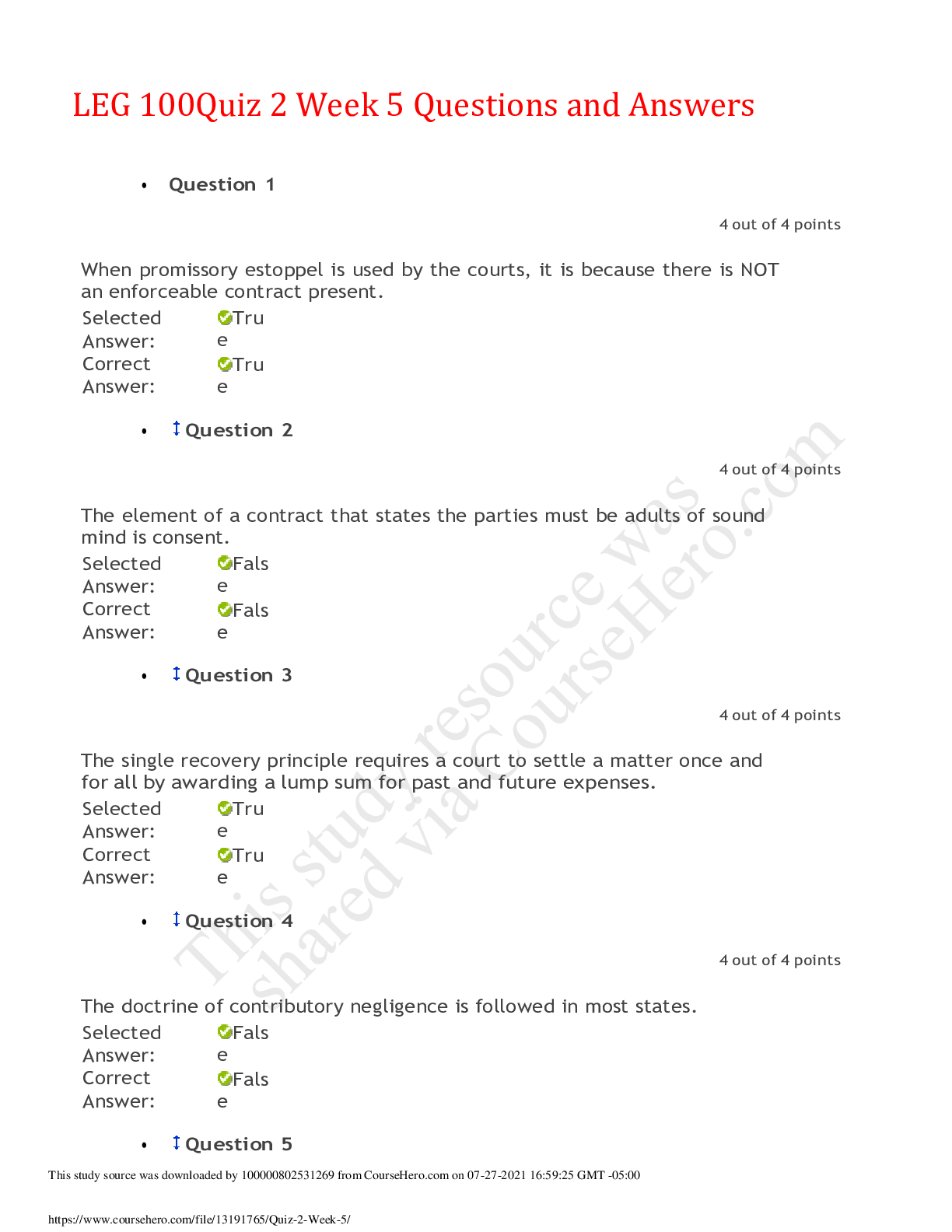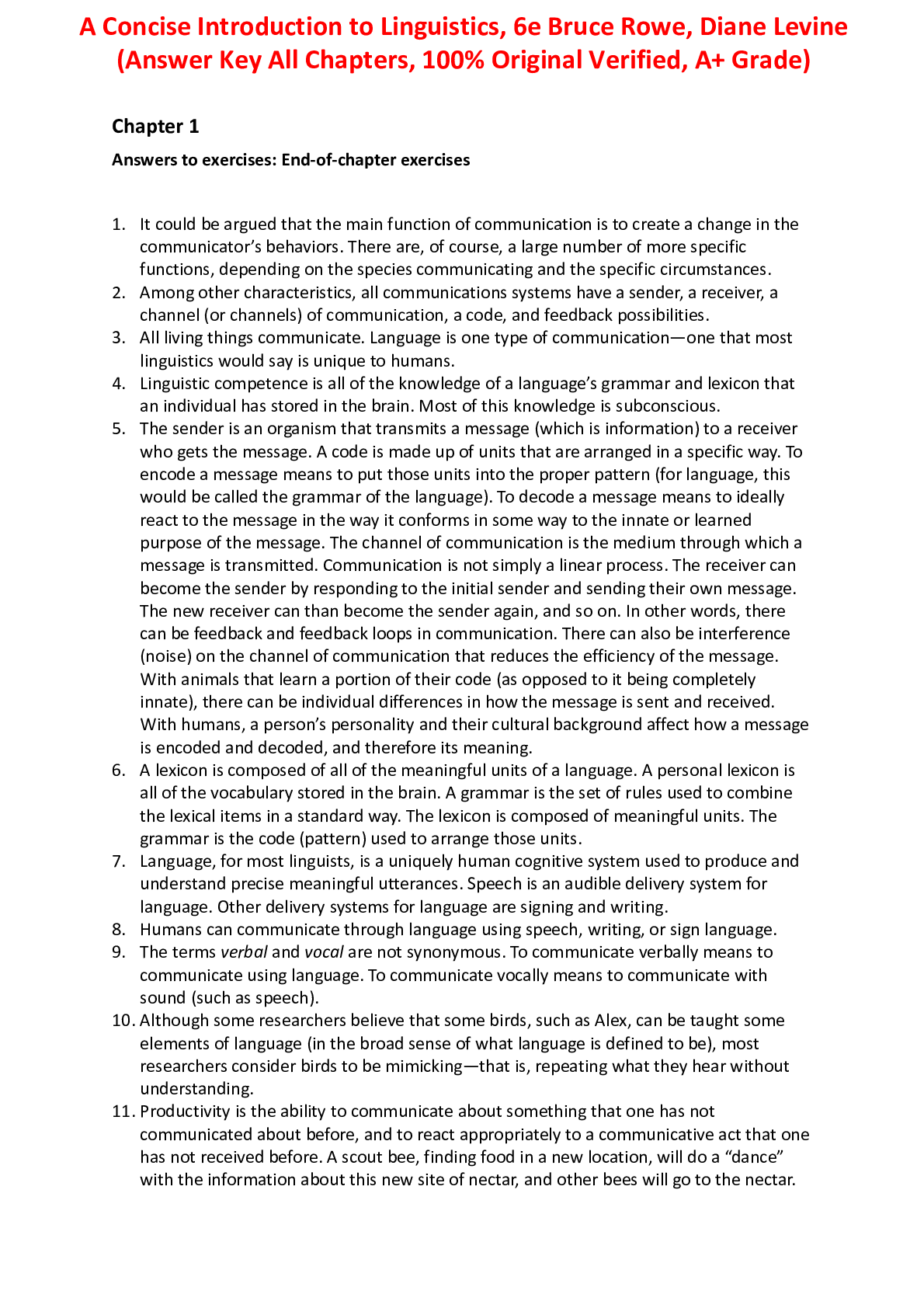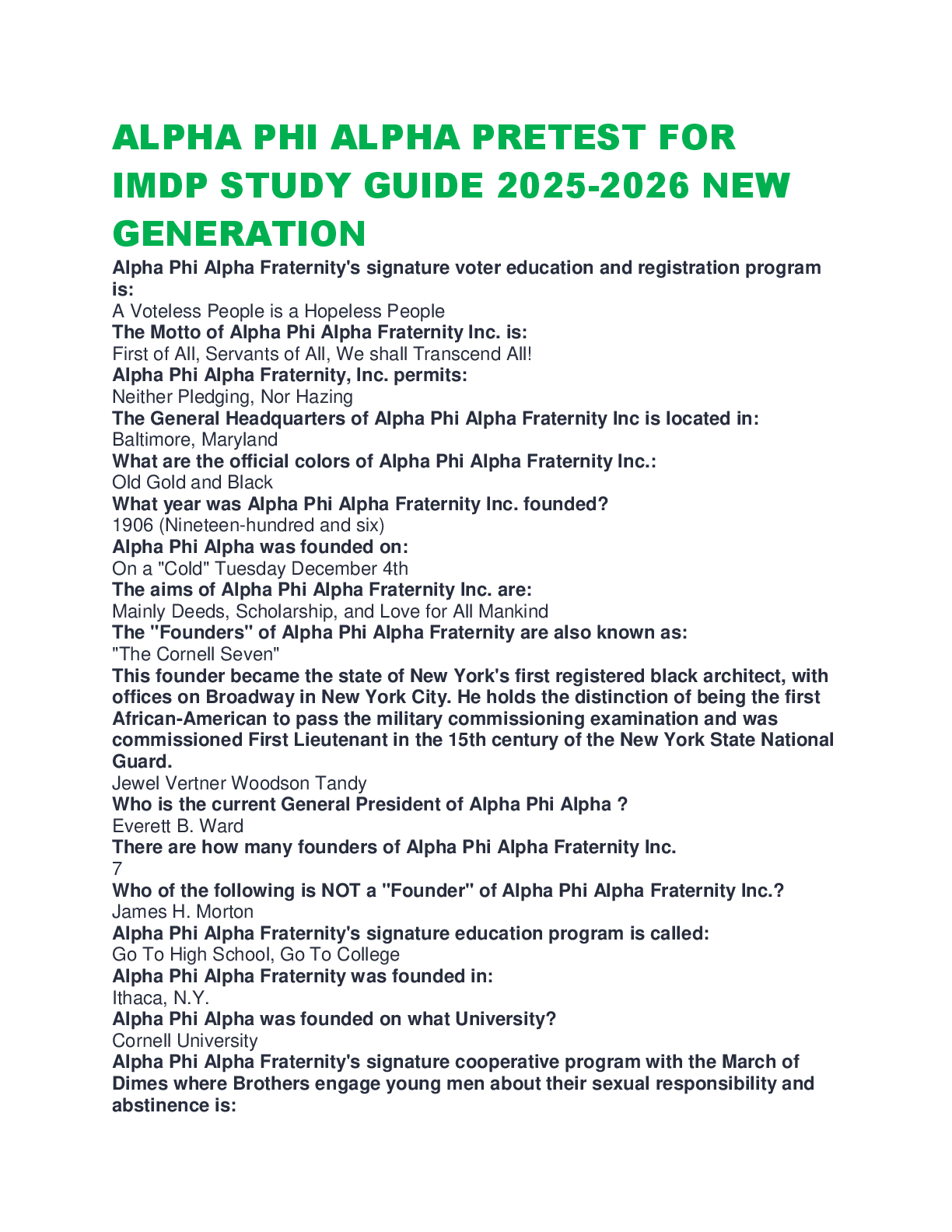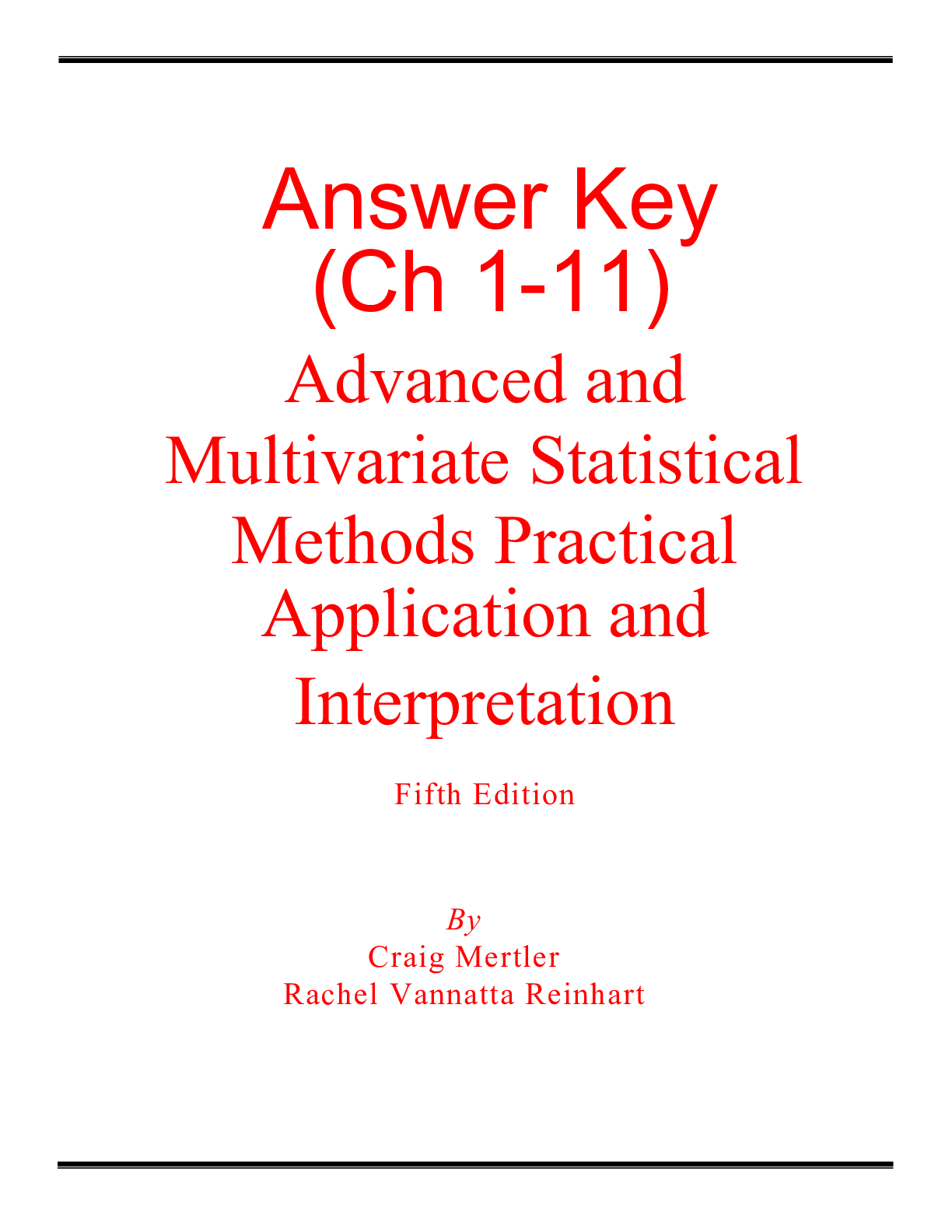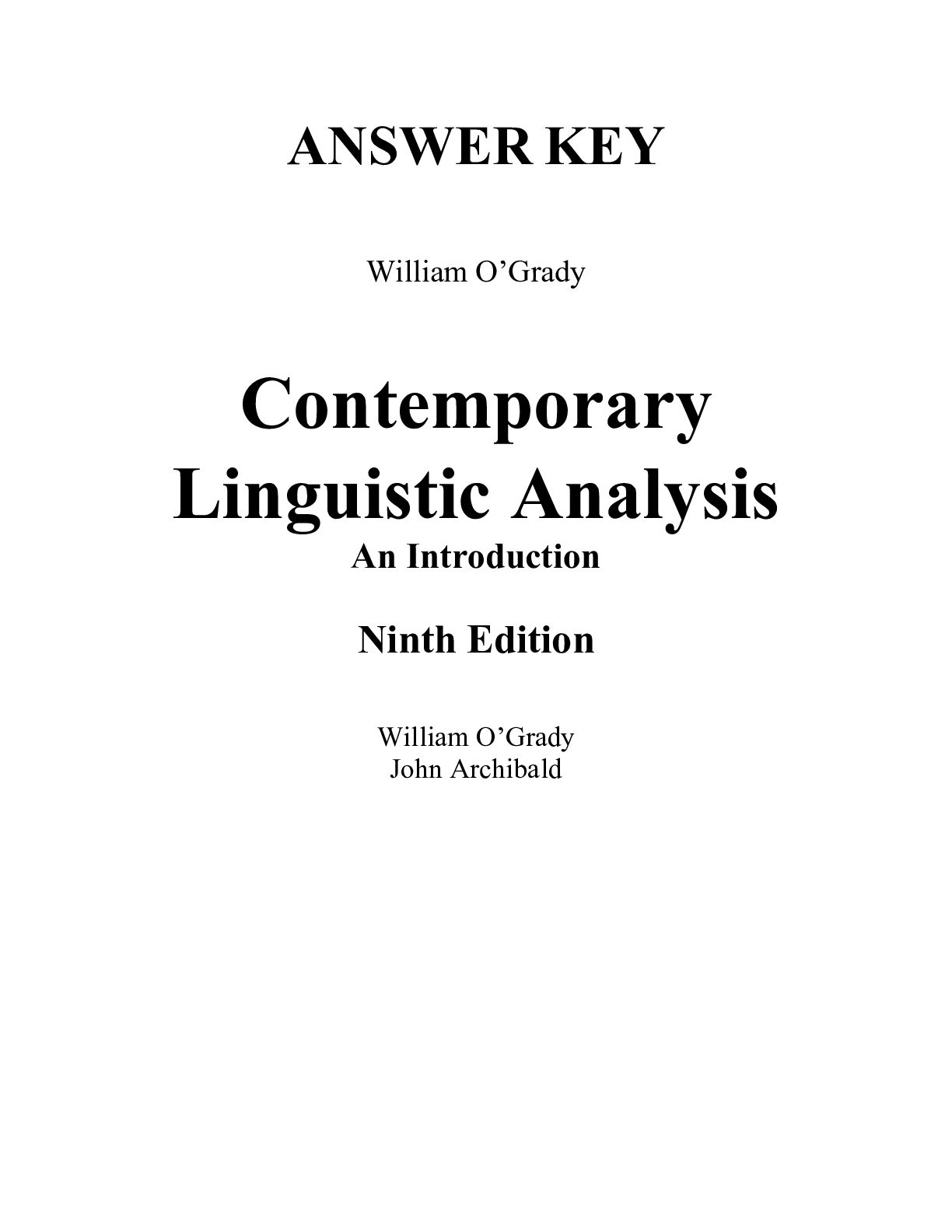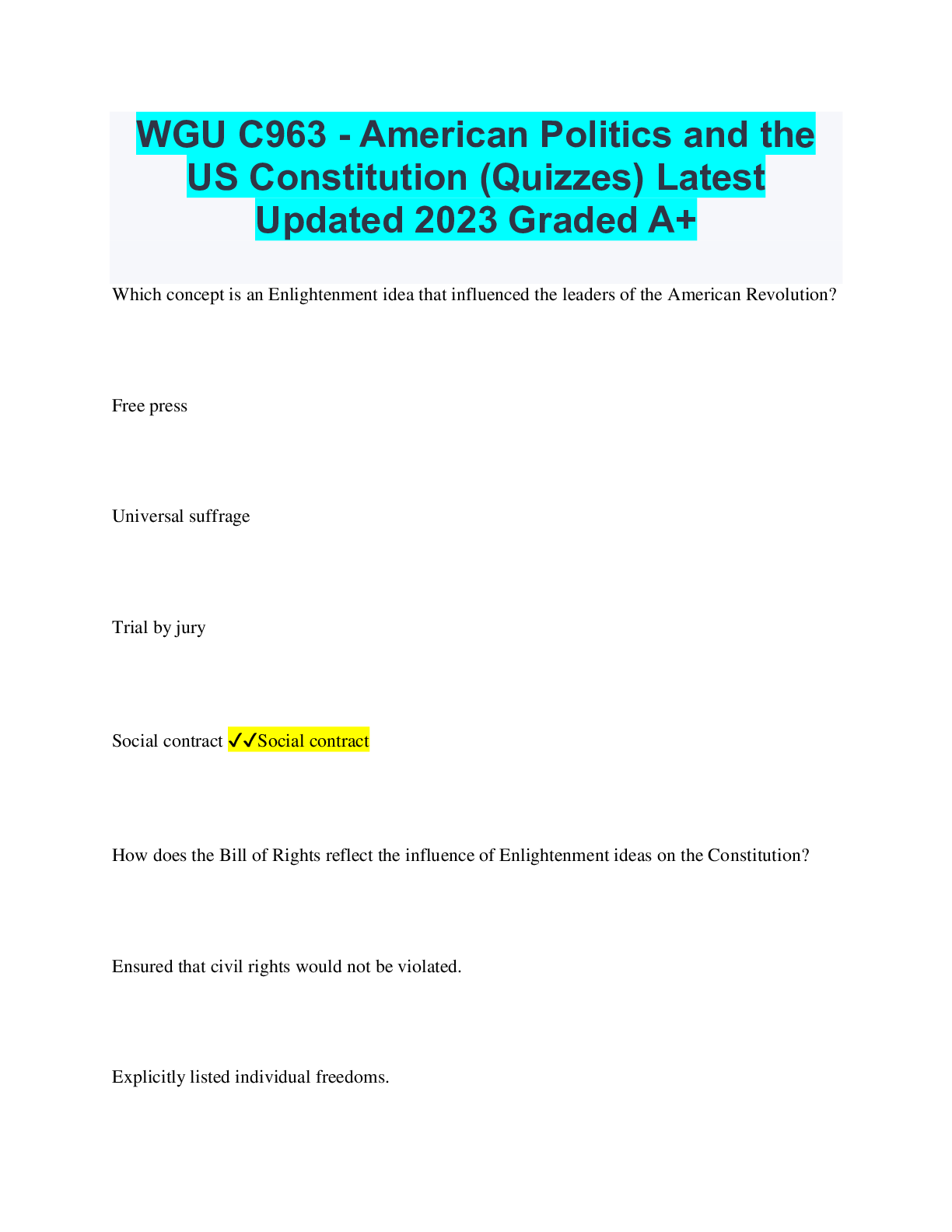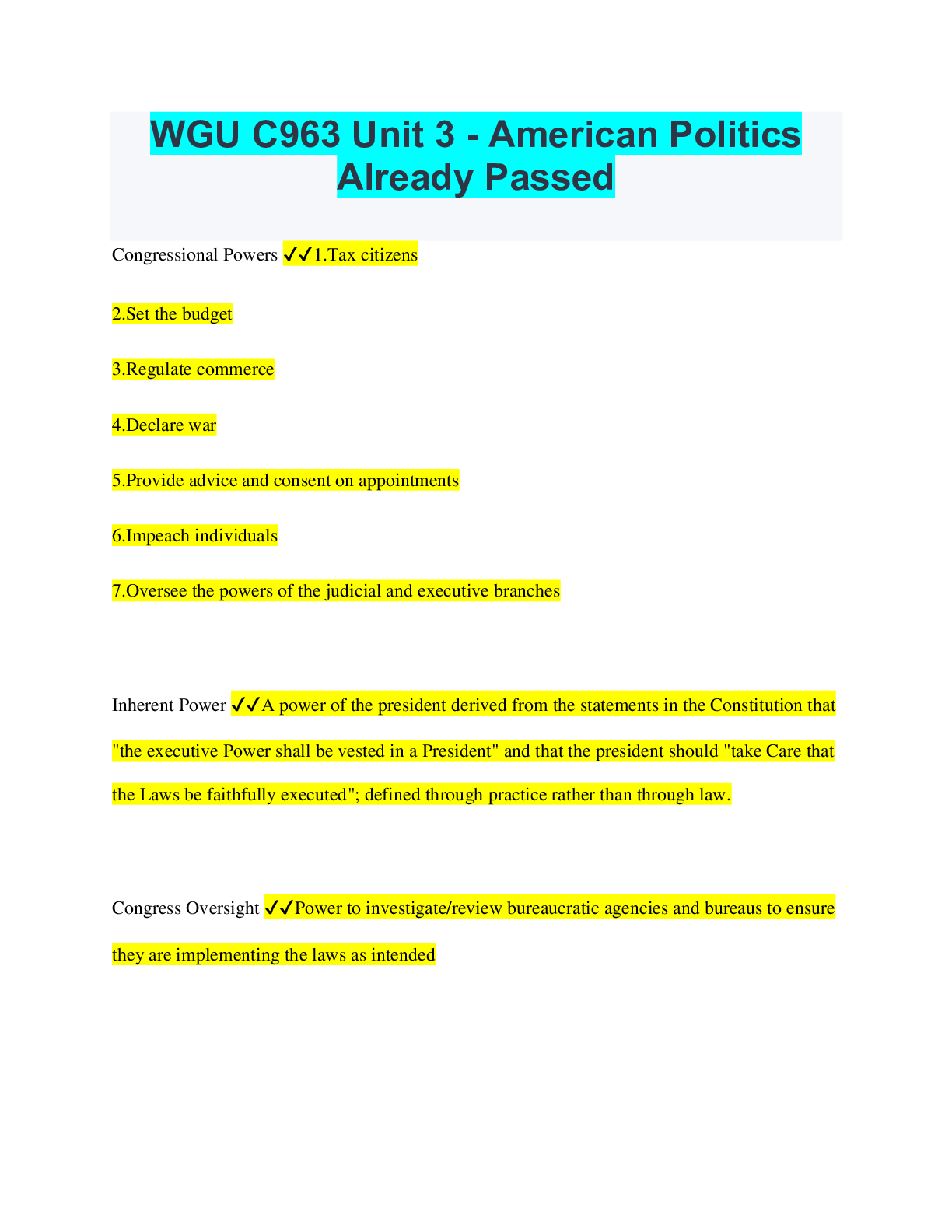A Concise Introduction to Linguistics, 6e Bruce Rowe, Diane Levine (Answer Key All Chapters, 100% Original Verified, A+ Grade)
Document Content and Description Below
A Concise Introduction to Linguistics, 6e Bruce Rowe, Diane Levine (Answer Key All Chapters, 100% Original Verified, A+ Grade)-Chapter 1
Answers to exercises: End-of-chapter exercises
1. It could be
...
argued that the main function of communication is to create a change in the
communicator’s behaviors. There are, of course, a large number of more specific
functions, depending on the species communicating and the specific circumstances.
2. Among other characteristics, all communications systems have a sender, a receiver, a
channel (or channels) of communication, a code, and feedback possibilities.
3. All living things communicate. Language is one type of communication—one that most
linguistics would say is unique to humans.
4. Linguistic competence is all of the knowledge of a language’s grammar and lexicon that
an individual has stored in the brain. Most of this knowledge is subconscious.
5. The sender is an organism that transmits a message (which is information) to a receiver
who gets the message. A code is made up of units that are arranged in a specific way. To
encode a message means to put those units into the proper pattern (for language, this
would be called the grammar of the language). To decode a message means to ideally
react to the message in the way it conforms in some way to the innate or learned
purpose of the message. The channel of communication is the medium through which a
message is transmitted. Communication is not simply a linear process. The receiver can
become the sender by responding to the initial sender and sending their own message.
The new receiver can than become the sender again, and so on. In other words, there
can be feedback and feedback loops in communication. There can also be interference
(noise) on the channel of communication that reduces the efficiency of the message.
With animals that learn a portion of their code (as opposed to it being completely
innate), there can be individual differences in how the message is sent and received.
With humans, a person’s personality and their cultural background affect how a message
is encoded and decoded, and therefore its meaning.
6. A lexicon is composed of all of the meaningful units of a language. A personal lexicon is
all of the vocabulary stored in the brain. A grammar is the set of rules used to combine
the lexical items in a standard way. The lexicon is composed of meaningful units. The
grammar is the code (pattern) used to arrange those units.
7. Language, for most linguists, is a uniquely human cognitive system used to produce and
understand precise meaningful utterances. Speech is an audible delivery system for
language. Other delivery systems for language are signing and writing.
8. Humans can communicate through language using speech, writing, or sign language.
9. The terms verbal and vocal are not synonymous. To communicate verbally means to
communicate using language. To communicate vocally means to communicate with
sound (such as speech).
10. Although some researchers believe that some birds, such as Alex, can be taught some
elements of language (in the broad sense of what language is defined to be), most
researchers consider birds to be mimicking—that is, repeating what they hear without
understanding.
11. Productivity is the ability to communicate about something that one has not
communicated about before, and to react appropriately to a communicative act that one
has not received before. A scout bee, finding food in a new location, will do a “dance”
with the information about this new site of nectar, and other bees will go to the nectar.
A Concise Introduction to Linguistics, 6e Bruce Rowe, Diane Levine
(Answer Key All Chapters, 100% Original Verified, A+ Grade)
This is productivity in its broad sense. Yet, as far as we know, bees cannot communicate
in a productive away about things other than nectar. Hypothetically, humans can be
productive about any topic.
12. See Table 1-1 in the book.
13. Bird calls tend to be short and acoustically simple, and each is about a specific and
different thing. Some birdcalls are not species specific. Bird songs tend to be long (some
are very long), acoustically complex, and mostly used to attract a mate. Bird songs are
species specific.
14. The Clever Hans effect refers to subtle, mostly subconscious, cueing of a nonhuman or
human subject.
15. Note: The question asks students to construct a chart. Since the charts would vary
greatly, we decided to give some basic facts in a non-chart fashion.
16. Most linguists would not agree that apes can learn language. Some might agree that
they can learn a little bit of language-type behavior in the broadest sense of the word
language. But, no matter how long an ape is in an ape-language program (Washoe was
in such a program for almost 42 years), its vocabulary does not approach the size and
diversity of a young child’s. A child learns their language (or languages) informally from
the social environment. An ape has to be formally and continually taught and rewarded
for its “linguistic-type” behavior. Very few apes have learned anything that might be
called grammar. When claims are made that an ape has learned a grammatical rule, it is
a simple rule. Apes seldom get past using two signs in one communicative act. In other
words, they do not learn to make constructions that might be called clauses or
sentences. The apes make mistakes by using the wrong sign a significant number of
times, even when they have used the sign for years. A child seldom makes these types of
mistake. A child would not call a pen a chair once the child had thoroughly learned what
those words refer to; an ape might use the wrong sign for something it had learned over
and over again. See the book for more on this.
[Show More]
Last updated: 1 year ago
Preview 1 out of 44 pages

